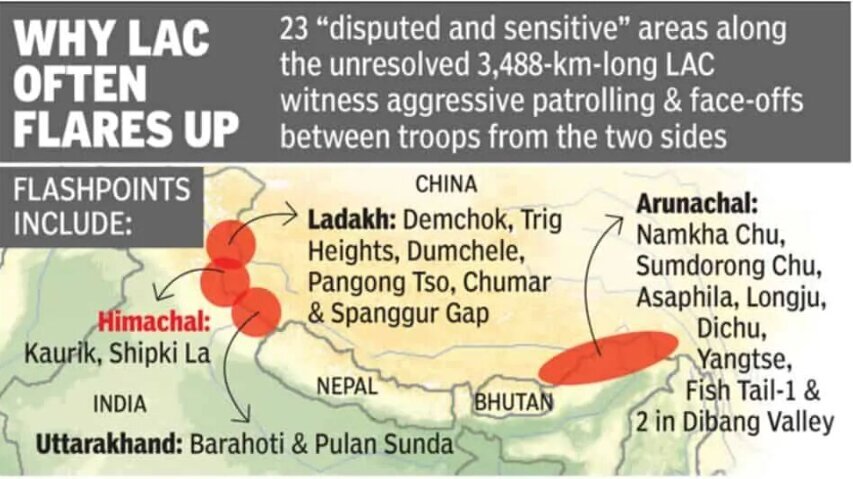Five Point Plan to De-escalate LAC Stand-off | 12 Sep 2020
Why in News
Recently, India and China have agreed on a five points plan to disengage troops and reduce tensions along the Line of Actual Control (LAC), where Indian and Chinese troops have been engaged in a four and a half month long stand-off.
- The move came after the talks between India’s External Affairs Minister and his Chinese counterpart, on the margins of a Shanghai Cooperation Organisation (SCO) meeting in Russia.
Key Points
- Five Point Plan:
- Both sides should take guidance from Wuhan and Mahabalipuram summits on developing India-China relations, that includes not allowing differences to become disputes.
- Border troops should continue their dialogue, quickly disengage, maintain proper distance and ease tensions.
- The two sides shall abide by all the existing agreements and protocols on China-India boundary affairs and avoid any action that could escalate matters.
- Continuing communications through the Special Representatives mechanism, and meetings of the Working Mechanism for Consultation and Coordination on border affairs.
- The Special Representatives (SRs) on the Boundary Question was established in 2003. It provided important guidance for ensuring peace and tranquility in border areas in a challenging situation.
- WMCC was established in 2012.
- Working to conclude new confidence-building measures.
- Reasons for Talk:
- Initially, China appeared to have convinced itself that India had no option but to accept its new claims at LAC.
- This confidence was reflected in China’s refusal to pull back its forces from LAC and its dismissive diplomatic tone.
- India’s repeated demand for restoration of the status quo ante on the frontier was not heeded, until the Indian army ramped up its mobilisation and boldly seized some high ground to challenge Chinese military positions.
- These moves on the frontier also came along with a series of economic measures against China, such as banning 100s of Chinese applications and specifying country of origin on imports.
- India’s demonstration of the political resolve to escalate the conflict and the military capability to back it may have probably convinced China that it needs to rethink its approach to the current crisis.
- Initially, China appeared to have convinced itself that India had no option but to accept its new claims at LAC.
- Issues Involved:
- The joint statement of India and China tries to reduce the tension at LAC, however the separate explanatory comments from both the countries reveal the challenges ahead.
- India insists that the objective of the talks is to “restore” the status quo ante, however there is no explicit Chinese commitment to that goal.
- China wants to separate the border conflict from the rest of the relationship, however India says the two are inextricably interlinked.
- These deep differences continue to complicate the path towards comprehensive military disengagement and de-escalation.
- The joint statement of India and China tries to reduce the tension at LAC, however the separate explanatory comments from both the countries reveal the challenges ahead.
Way Forward
The five point plan between both the countries is a welcome step, however India must not blindly trust China amidst the surprise aggression during April-May by the People's Liberation Army. This is not the first time in the last few months that China has promised to stand down. However, it raised the expectations only to dash them quickly.

